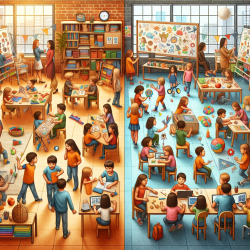Understanding the Impact of Classroom Placement on Twins
The question of whether twins should be placed in the same classroom or separated is a topic of ongoing debate among educators, parents, and policymakers. A recent study titled "Classroom Placement and Twins’ Social Behaviors in Elementary School: Providing Empirical Evidence to Inform Educational Policy" sheds light on this issue, providing data-driven insights that can guide educational policy and practice.
Research Insights
The study, conducted on 560 twin pairs, examined the effects of classroom placement on social behaviors from ages 5 to 12. Contrary to the common belief that separating twins supports individual identity and reduces competition, the study found no detrimental effects of classroom sharing on twins’ social development. In fact, educating twins together was associated with modest positive outcomes in their social behaviors and functioning at school.
Key Findings
- Social Withdrawal: Twins sharing the same classroom were less socially withdrawn at ages 6 and 10.
- Physical Aggression: At age 12, twins in the same classroom displayed lower levels of physical aggression.
- Inattention: Classroom sharing was associated with lower levels of inattention at age 12.
- Similarity: Twins in the same classroom exhibited greater similarity in behaviors, particularly in anxiety, inattention, and prosocial behaviors.
Implications for Practitioners
For practitioners working with schools, these findings suggest that the default policy of separating twins may not always be beneficial. Instead, decisions should be made on a case-by-case basis, considering the unique needs and preferences of the twins and their families. Educators and therapists can use this evidence to advocate for more flexible classroom placement policies that prioritize the well-being and development of twins.
Encouraging Further Research
While this study provides valuable insights, it also highlights the need for further research. Future studies could explore the long-term effects of classroom placement beyond elementary school and examine other factors that may influence the outcomes, such as teacher characteristics and classroom climate.
Conclusion
Overall, the study suggests that keeping twins together in the classroom can have positive effects on their social behaviors. As practitioners, it's crucial to base decisions on empirical evidence and to remain open to adapting policies as new research emerges.
To read the original research paper, please follow this link: Classroom Placement and Twins’ Social Behaviors in Elementary School: Providing Empirical Evidence to Inform Educational Policy.










